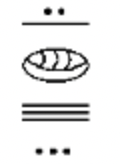2.6: Homework
- Page ID
- 70307
\( \newcommand{\vecs}[1]{\overset { \scriptstyle \rightharpoonup} {\mathbf{#1}} } \)
\( \newcommand{\vecd}[1]{\overset{-\!-\!\rightharpoonup}{\vphantom{a}\smash {#1}}} \)
\( \newcommand{\dsum}{\displaystyle\sum\limits} \)
\( \newcommand{\dint}{\displaystyle\int\limits} \)
\( \newcommand{\dlim}{\displaystyle\lim\limits} \)
\( \newcommand{\id}{\mathrm{id}}\) \( \newcommand{\Span}{\mathrm{span}}\)
( \newcommand{\kernel}{\mathrm{null}\,}\) \( \newcommand{\range}{\mathrm{range}\,}\)
\( \newcommand{\RealPart}{\mathrm{Re}}\) \( \newcommand{\ImaginaryPart}{\mathrm{Im}}\)
\( \newcommand{\Argument}{\mathrm{Arg}}\) \( \newcommand{\norm}[1]{\| #1 \|}\)
\( \newcommand{\inner}[2]{\langle #1, #2 \rangle}\)
\( \newcommand{\Span}{\mathrm{span}}\)
\( \newcommand{\id}{\mathrm{id}}\)
\( \newcommand{\Span}{\mathrm{span}}\)
\( \newcommand{\kernel}{\mathrm{null}\,}\)
\( \newcommand{\range}{\mathrm{range}\,}\)
\( \newcommand{\RealPart}{\mathrm{Re}}\)
\( \newcommand{\ImaginaryPart}{\mathrm{Im}}\)
\( \newcommand{\Argument}{\mathrm{Arg}}\)
\( \newcommand{\norm}[1]{\| #1 \|}\)
\( \newcommand{\inner}[2]{\langle #1, #2 \rangle}\)
\( \newcommand{\Span}{\mathrm{span}}\) \( \newcommand{\AA}{\unicode[.8,0]{x212B}}\)
\( \newcommand{\vectorA}[1]{\vec{#1}} % arrow\)
\( \newcommand{\vectorAt}[1]{\vec{\text{#1}}} % arrow\)
\( \newcommand{\vectorB}[1]{\overset { \scriptstyle \rightharpoonup} {\mathbf{#1}} } \)
\( \newcommand{\vectorC}[1]{\textbf{#1}} \)
\( \newcommand{\vectorD}[1]{\overrightarrow{#1}} \)
\( \newcommand{\vectorDt}[1]{\overrightarrow{\text{#1}}} \)
\( \newcommand{\vectE}[1]{\overset{-\!-\!\rightharpoonup}{\vphantom{a}\smash{\mathbf {#1}}}} \)
\( \newcommand{\vecs}[1]{\overset { \scriptstyle \rightharpoonup} {\mathbf{#1}} } \)
\( \newcommand{\vecd}[1]{\overset{-\!-\!\rightharpoonup}{\vphantom{a}\smash {#1}}} \)
\(\newcommand{\avec}{\mathbf a}\) \(\newcommand{\bvec}{\mathbf b}\) \(\newcommand{\cvec}{\mathbf c}\) \(\newcommand{\dvec}{\mathbf d}\) \(\newcommand{\dtil}{\widetilde{\mathbf d}}\) \(\newcommand{\evec}{\mathbf e}\) \(\newcommand{\fvec}{\mathbf f}\) \(\newcommand{\nvec}{\mathbf n}\) \(\newcommand{\pvec}{\mathbf p}\) \(\newcommand{\qvec}{\mathbf q}\) \(\newcommand{\svec}{\mathbf s}\) \(\newcommand{\tvec}{\mathbf t}\) \(\newcommand{\uvec}{\mathbf u}\) \(\newcommand{\vvec}{\mathbf v}\) \(\newcommand{\wvec}{\mathbf w}\) \(\newcommand{\xvec}{\mathbf x}\) \(\newcommand{\yvec}{\mathbf y}\) \(\newcommand{\zvec}{\mathbf z}\) \(\newcommand{\rvec}{\mathbf r}\) \(\newcommand{\mvec}{\mathbf m}\) \(\newcommand{\zerovec}{\mathbf 0}\) \(\newcommand{\onevec}{\mathbf 1}\) \(\newcommand{\real}{\mathbb R}\) \(\newcommand{\twovec}[2]{\left[\begin{array}{r}#1 \\ #2 \end{array}\right]}\) \(\newcommand{\ctwovec}[2]{\left[\begin{array}{c}#1 \\ #2 \end{array}\right]}\) \(\newcommand{\threevec}[3]{\left[\begin{array}{r}#1 \\ #2 \\ #3 \end{array}\right]}\) \(\newcommand{\cthreevec}[3]{\left[\begin{array}{c}#1 \\ #2 \\ #3 \end{array}\right]}\) \(\newcommand{\fourvec}[4]{\left[\begin{array}{r}#1 \\ #2 \\ #3 \\ #4 \end{array}\right]}\) \(\newcommand{\cfourvec}[4]{\left[\begin{array}{c}#1 \\ #2 \\ #3 \\ #4 \end{array}\right]}\) \(\newcommand{\fivevec}[5]{\left[\begin{array}{r}#1 \\ #2 \\ #3 \\ #4 \\ #5 \\ \end{array}\right]}\) \(\newcommand{\cfivevec}[5]{\left[\begin{array}{c}#1 \\ #2 \\ #3 \\ #4 \\ #5 \\ \end{array}\right]}\) \(\newcommand{\mattwo}[4]{\left[\begin{array}{rr}#1 \amp #2 \\ #3 \amp #4 \\ \end{array}\right]}\) \(\newcommand{\laspan}[1]{\text{Span}\{#1\}}\) \(\newcommand{\bcal}{\cal B}\) \(\newcommand{\ccal}{\cal C}\) \(\newcommand{\scal}{\cal S}\) \(\newcommand{\wcal}{\cal W}\) \(\newcommand{\ecal}{\cal E}\) \(\newcommand{\coords}[2]{\left\{#1\right\}_{#2}}\) \(\newcommand{\gray}[1]{\color{gray}{#1}}\) \(\newcommand{\lgray}[1]{\color{lightgray}{#1}}\) \(\newcommand{\rank}{\operatorname{rank}}\) \(\newcommand{\row}{\text{Row}}\) \(\newcommand{\col}{\text{Col}}\) \(\renewcommand{\row}{\text{Row}}\) \(\newcommand{\nul}{\text{Nul}}\) \(\newcommand{\var}{\text{Var}}\) \(\newcommand{\corr}{\text{corr}}\) \(\newcommand{\len}[1]{\left|#1\right|}\) \(\newcommand{\bbar}{\overline{\bvec}}\) \(\newcommand{\bhat}{\widehat{\bvec}}\) \(\newcommand{\bperp}{\bvec^\perp}\) \(\newcommand{\xhat}{\widehat{\xvec}}\) \(\newcommand{\vhat}{\widehat{\vvec}}\) \(\newcommand{\uhat}{\widehat{\uvec}}\) \(\newcommand{\what}{\widehat{\wvec}}\) \(\newcommand{\Sighat}{\widehat{\Sigma}}\) \(\newcommand{\lt}{<}\) \(\newcommand{\gt}{>}\) \(\newcommand{\amp}{&}\) \(\definecolor{fillinmathshade}{gray}{0.9}\)- Submit homework separately from this workbook and staple all pages together. (One staple for the entire submission of all the unit homework)
- Start a new module on the front side of a new page and write the module number on the top center of the page.
- Answers without supporting work will receive no credit.
- Some solutions are given in the solutions manual.
- You may work with classmates but do your own work.
For each two sets noted, indicate whether or not the sets match. If they do, show a matching. If they do not, explain why not.
a. Small Blue A-blocks and Large Red A-Blocks
b. Yellow A-blocks and Circular A-blocks
Describe a matching between the set of counting numbers, {1, 2, 3, ...} and the set of positive multiples of five, {5, 10, 15, ...}.
Show every possible one-to-one correspondence between the Small Blue A-blocks and the Small Red A-blocks. Use abbreviations or pictures to denote the blocks.
Convert each numeral to a Hindu-Arabic Base Ten numeral.
| a. STROKE: | | | | | | | | | | | | | | | | |
| b. Tally: \(\cancel{||||}\cancel{||||}\cancel{||||} |||\) |
| c. Roman: MCMLXII |
| d. Roman: DCCXLIV |
| e. Roman: \(\bar{\bar{\text{IV}}\text{CCX}}\)DLI |
|
f. Egyptian:  |
|
g. Chinese  |
|
h. Mayan  |
| i. \(4032_{\text{seven}}\) |
| j. \(T6W_{\text{thirteen}}\) |
| k. \(1 \ 111 \ 001 \ 011_{\text{two}}\) |
| l. \(507_{\text{nine}}\) |
Convert 342 to a numeral in the numeration system or base specified.
| a. Roman | b. Base Seven | c. Egyptian |
| d. Base Two | e. Chinese |
Convert 838 to:
| a. Base Twelve | b. Base Eight |
| c. Base Five | d. Mayan |
Convert 13,595 to Base Twelve
Convert 120,258 to Mayan
Count from 620 to 630 in Base Five
State the numeral that comes just before:
| a. \(173 \ 425 \ 760_{\text{eleven}}\) | b. \(2 \ 010 \ 212 \ 000_{\text{four}}\) |
State the numeral that comes right after:
| a. \(539100TE_{\text{twelve}}\) | b. \(3 \ 102 \ 313 \ 444_{\text{five}}\) |
Answer true or false. If false, explain why
| a. \(2_{\text{four}} = 2\) | b. \(3_{\text{four}} = 3_{\text{twelve}}\) | c. \(10_{\text{twelve}} = 10_{\text{five}}\) |
Using Base Three blocks, you had 7 flats, 10 longs and 5 units. What number does this represent in
| a. Base Three? | b. Base Ten? |
Write each number shown in expanded notation as a numeral in the base specified.
| a. \(3 \times 7^{8} + 6 \times 7^{5} + 4 \times 7^{4}\) to Base Seven |
| b. \(1 \times 3^{10} + 2 \times 3^{9} + 2 \times 3^{3}\) to Base Three |
Write each number in expanded notation:
| a. \(200 \ 050 \ 030 \ 000_{\text{nine}}\) |
| b. \(1 \ 000 \ 100 \ 001 \ 000_{\text{two}}\) |
Write each numeral in expanded form. Then, convert each numeral to a Base Ten mixed numeral with the fraction simplified.
| a. \(43.3_{\text{nine}}\) | b. \(35.12_{\text{six}}\) |
| c. \(121.21_{\text{three}}\) | d. \(333.333_{\text{five}}\) |
Rewrite from expanded form to a numeral in the appropriate base.
| a. \(3 \times 4^{2} + 2 \times 4^{0} + 3 \times 4^{-1} + 1 \times 4^{-3}\) |
| b. \(5 \times 11^{3} + 10 \times 11^{1} + 8 \times 11^{-1} + 1 \times 11^{-2}\) |
| c. \(1 \times 2^{2} + 1 x\times 2^{0} + 1 \times 2^{-1} + 1 \times 2^{-4}\) |


